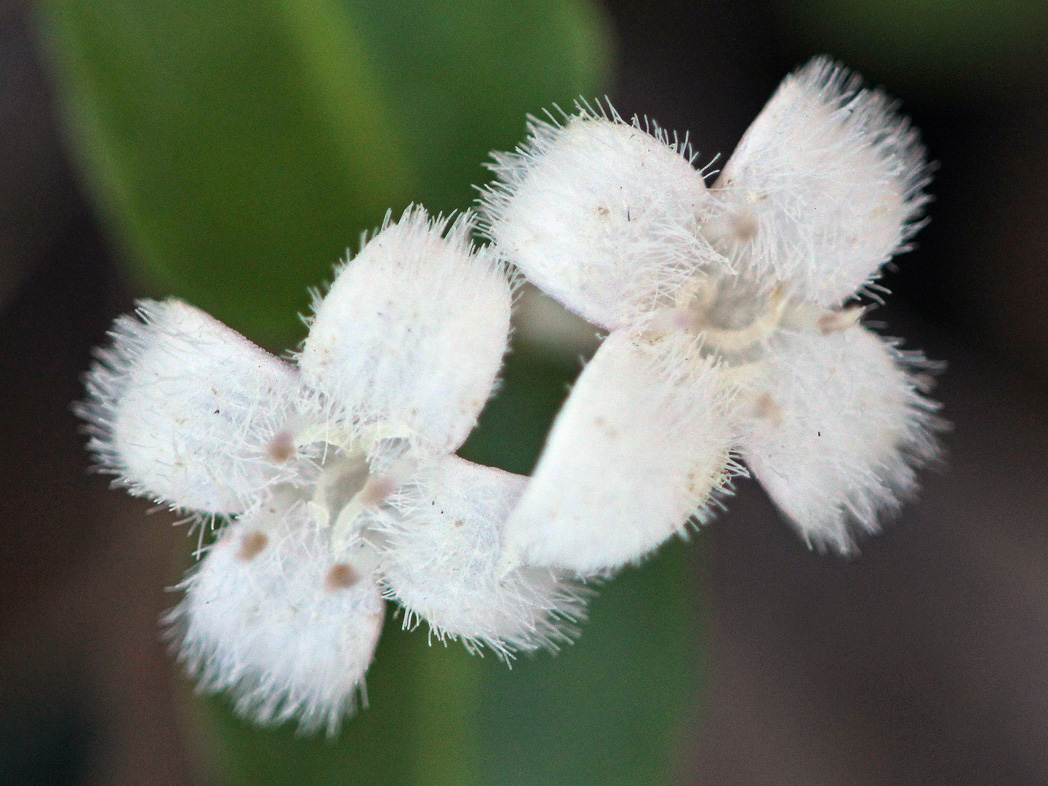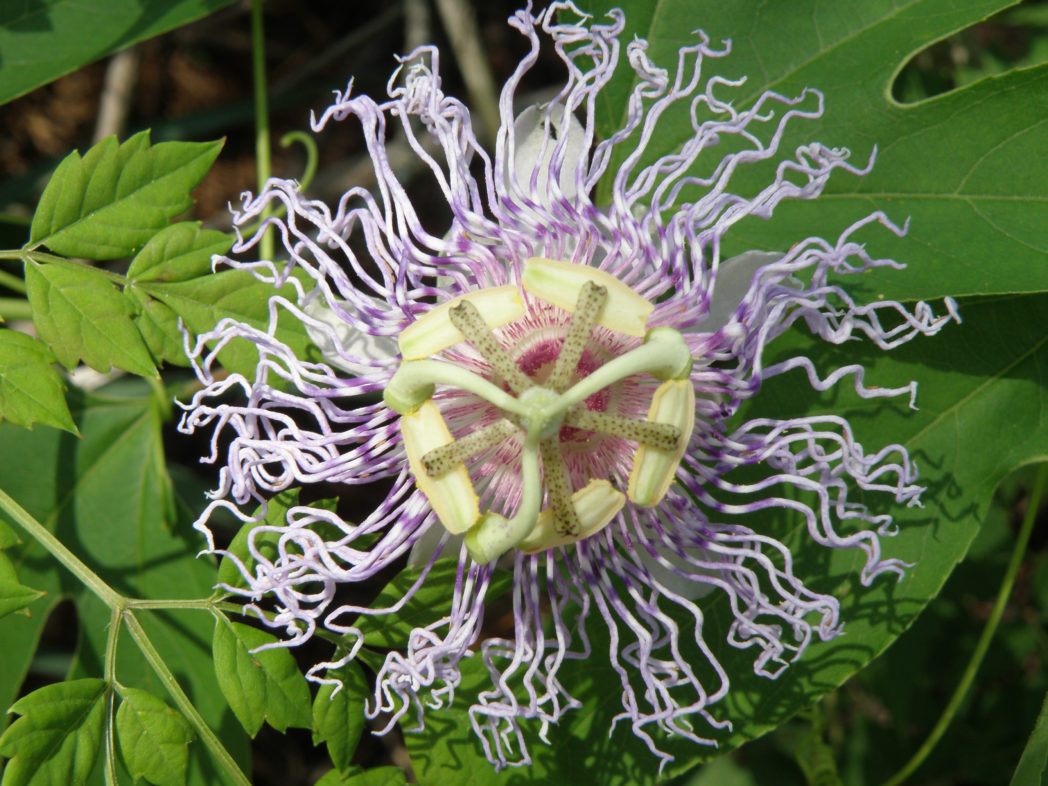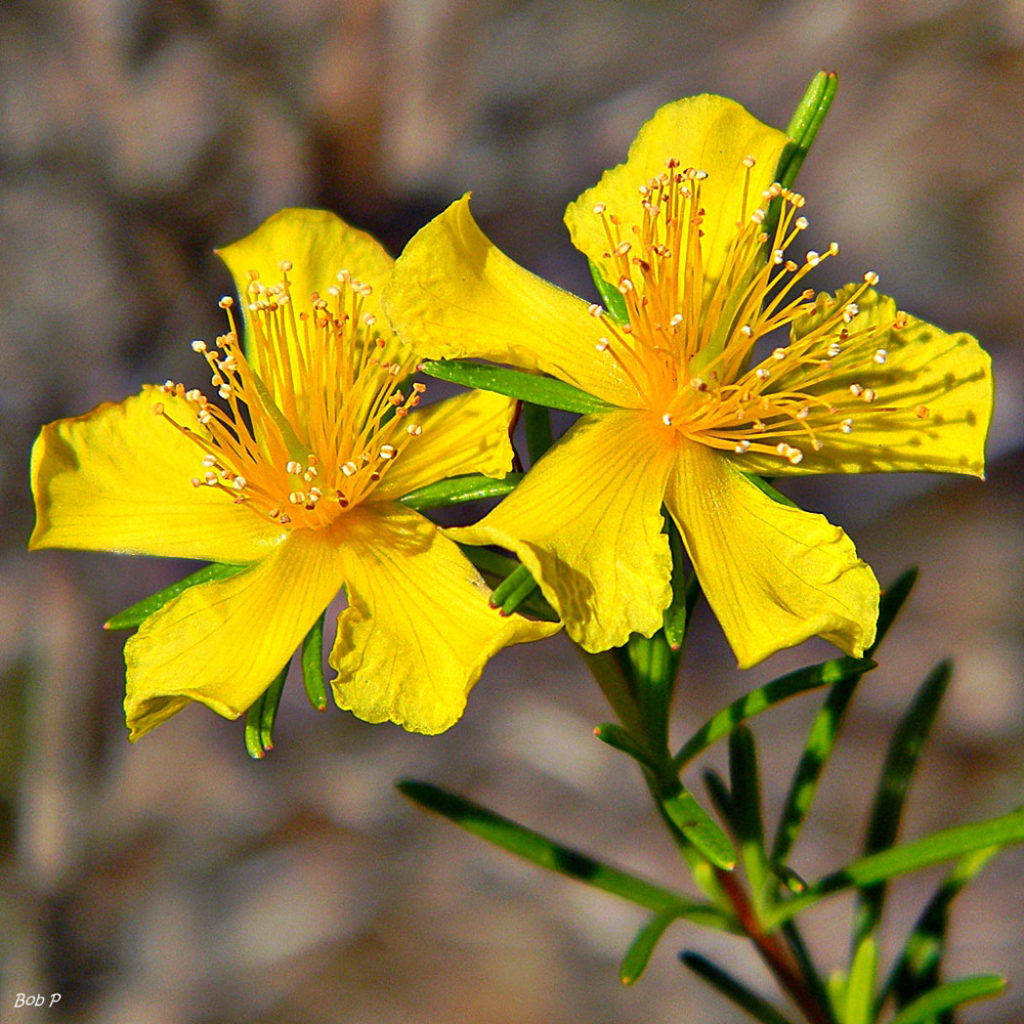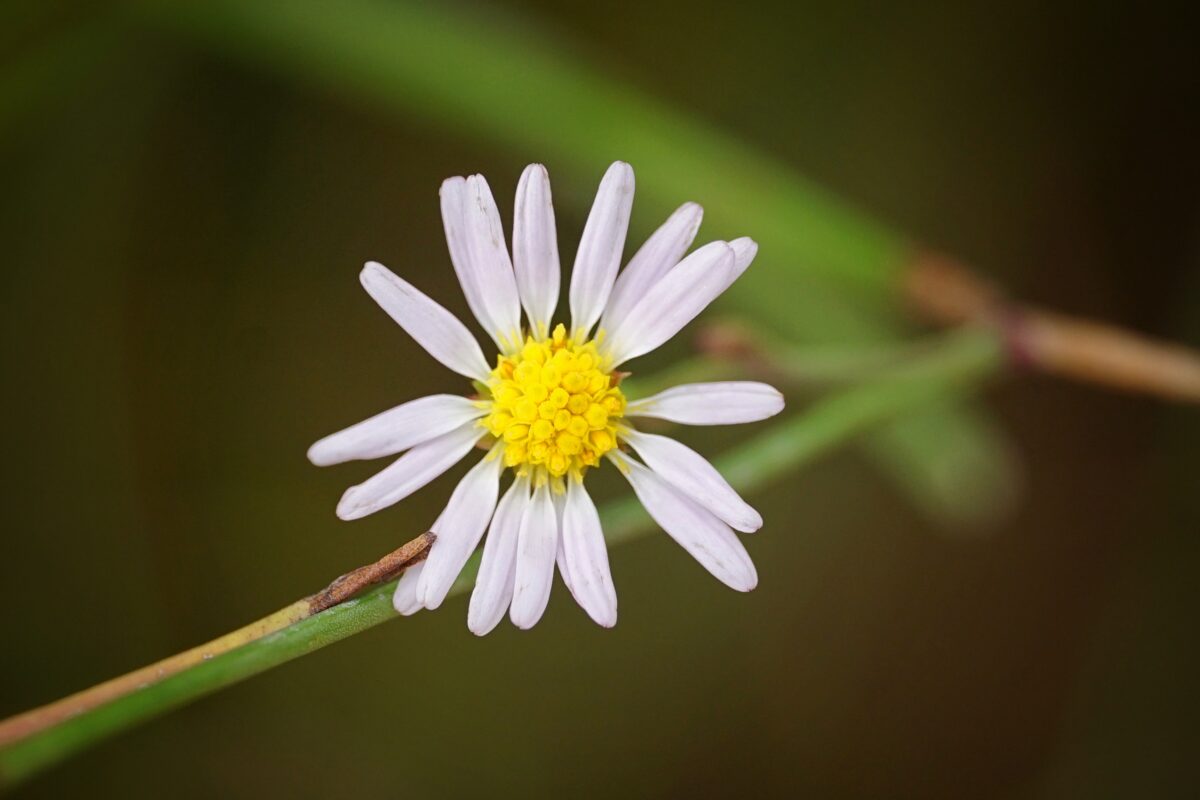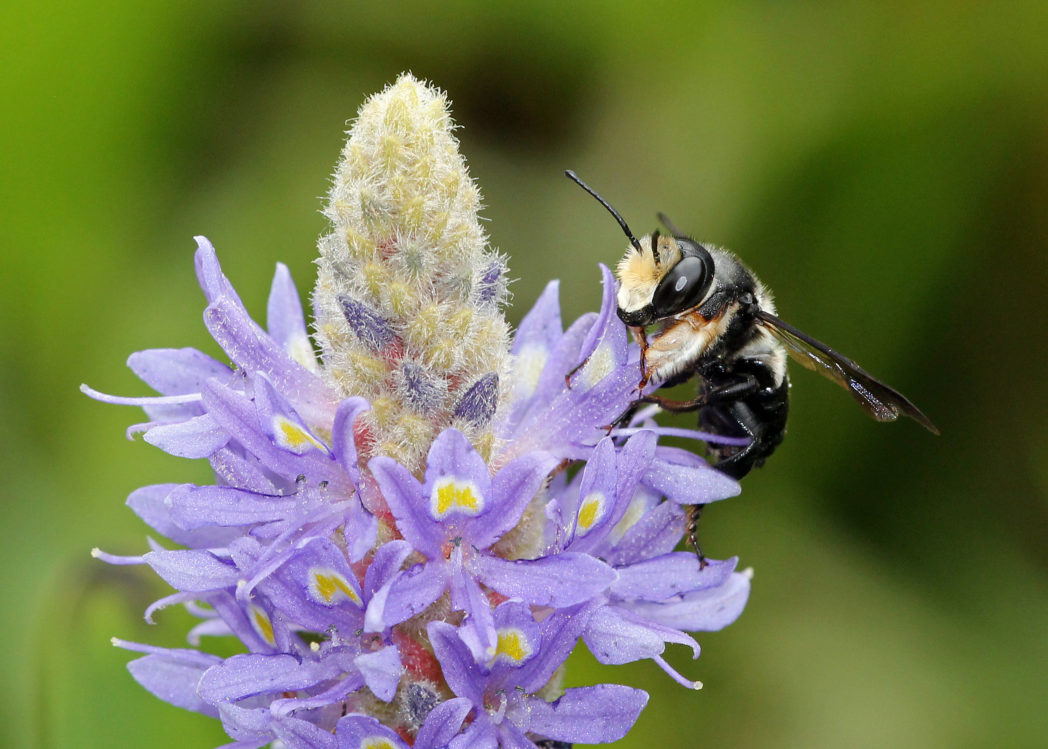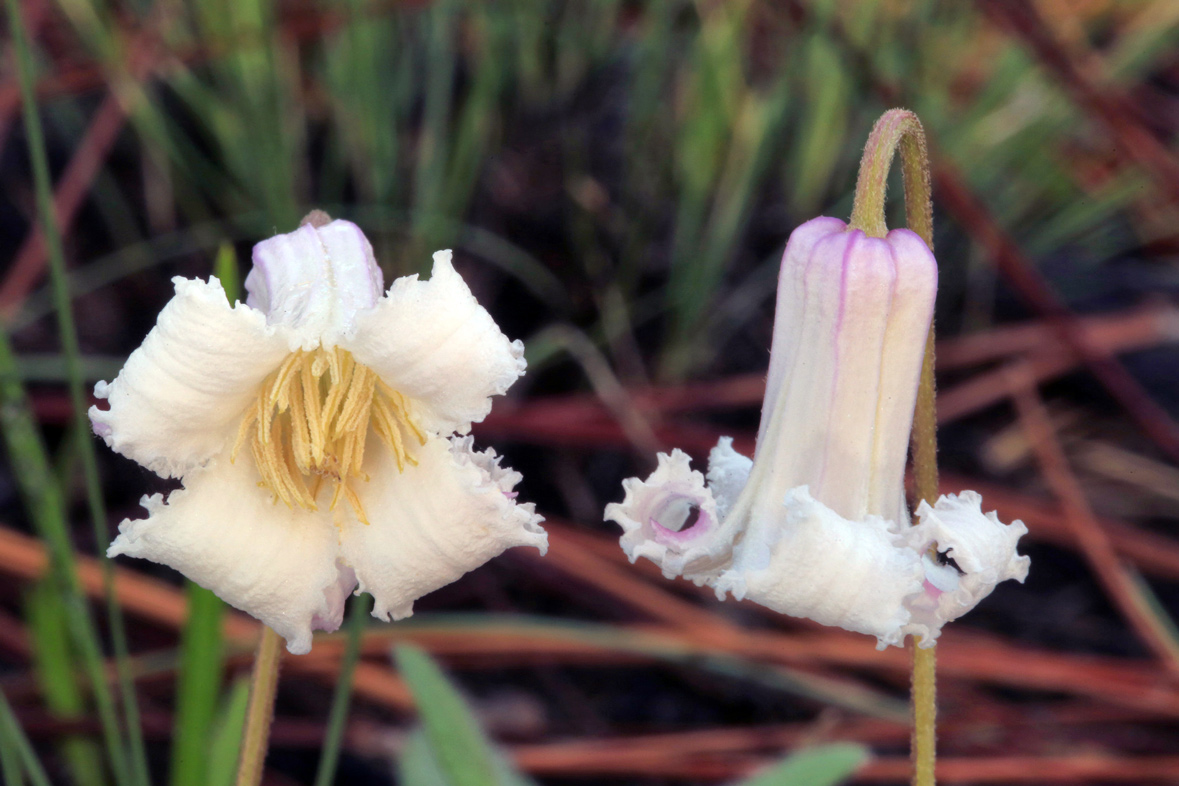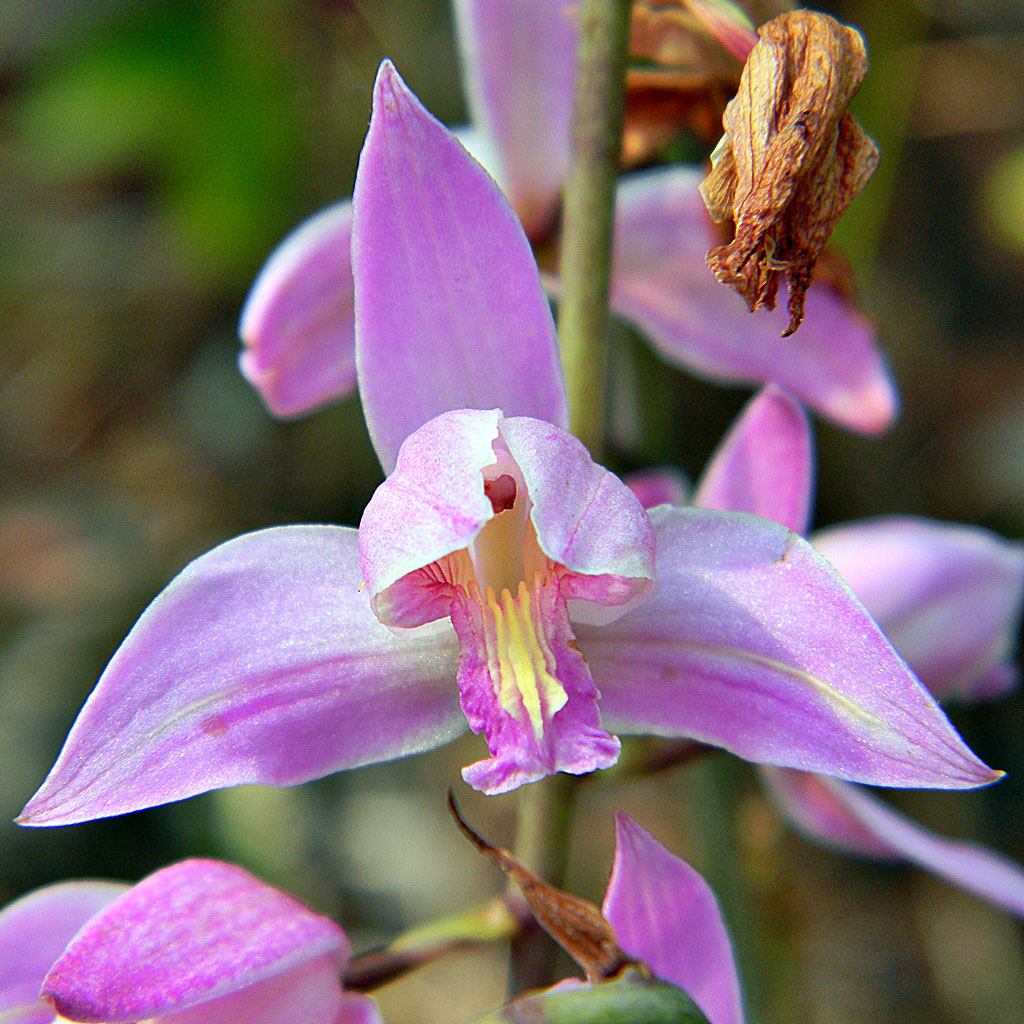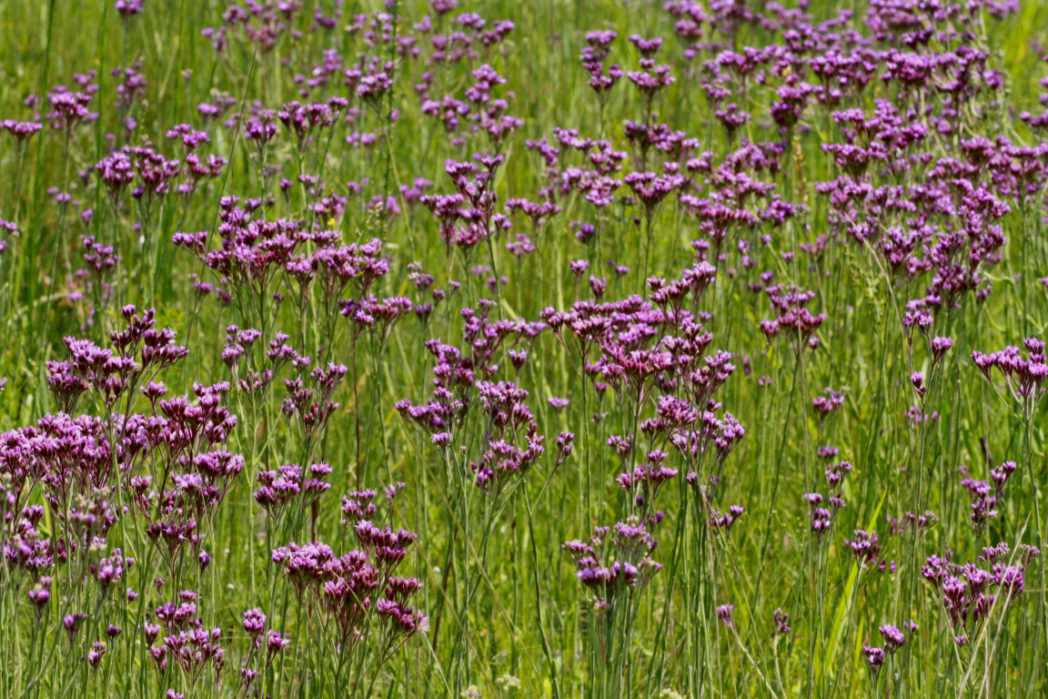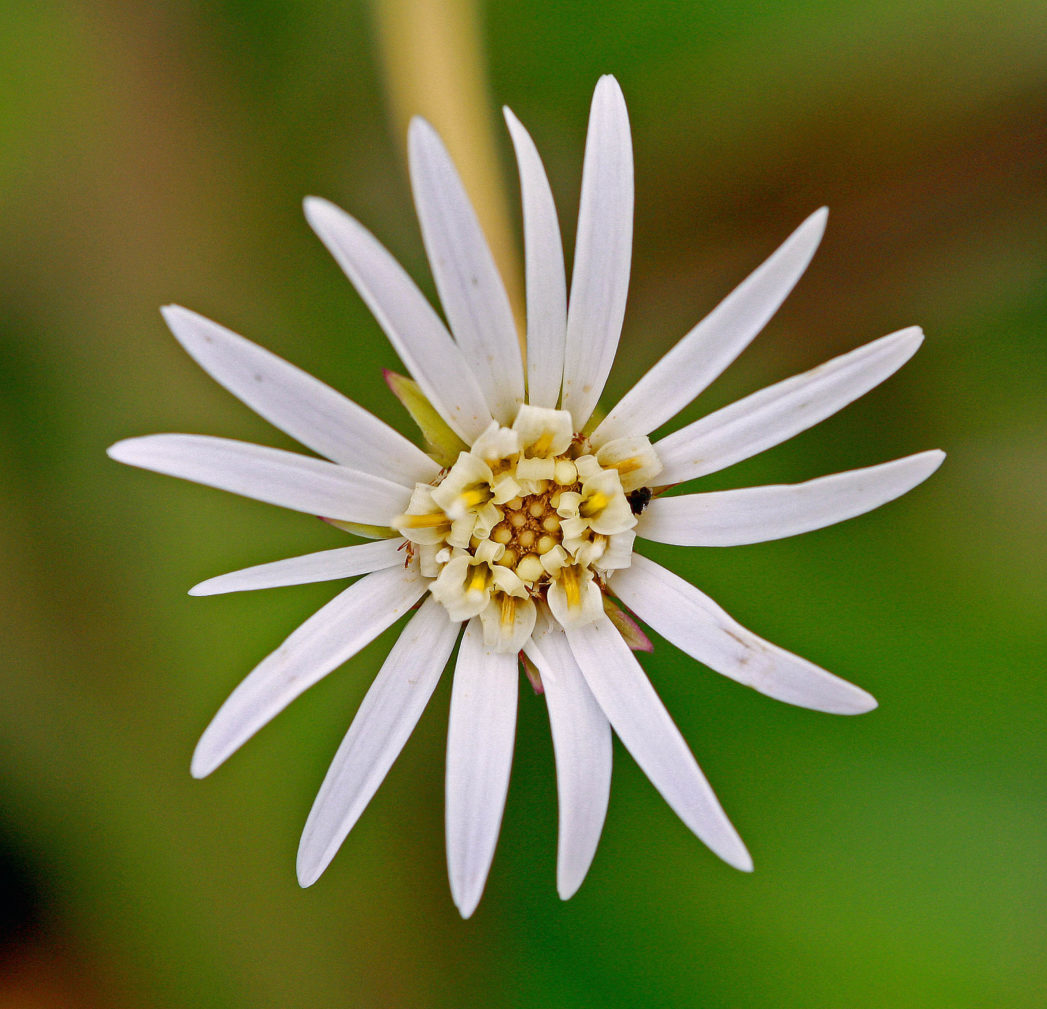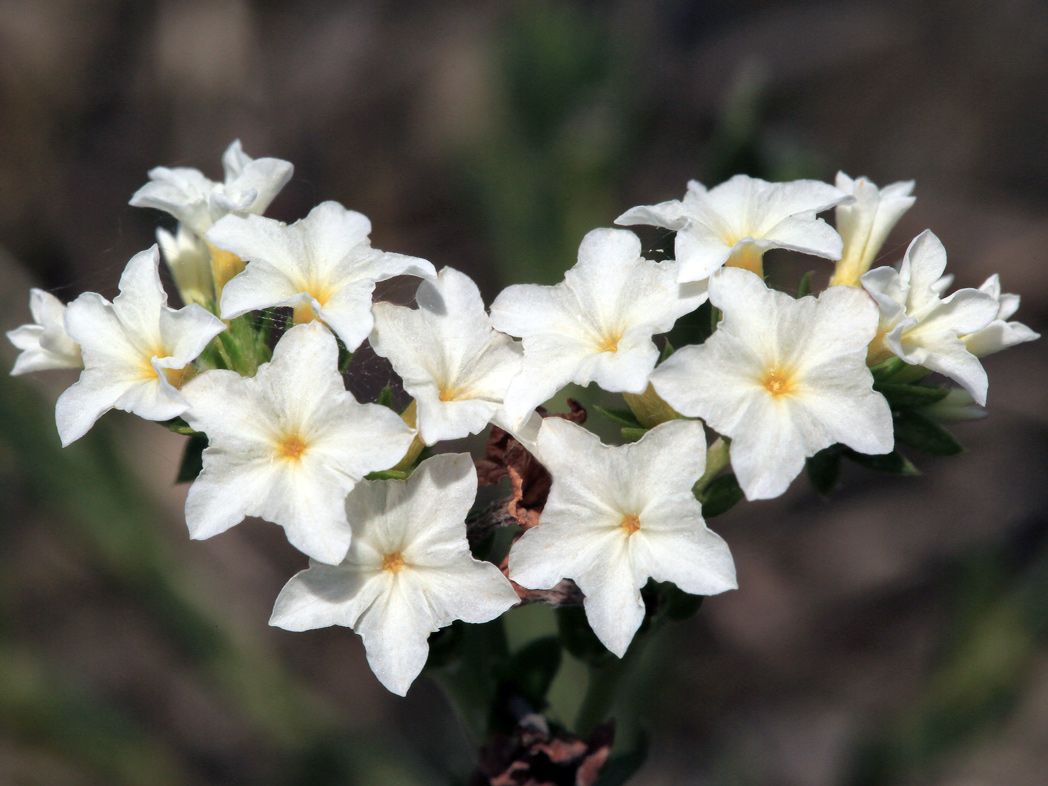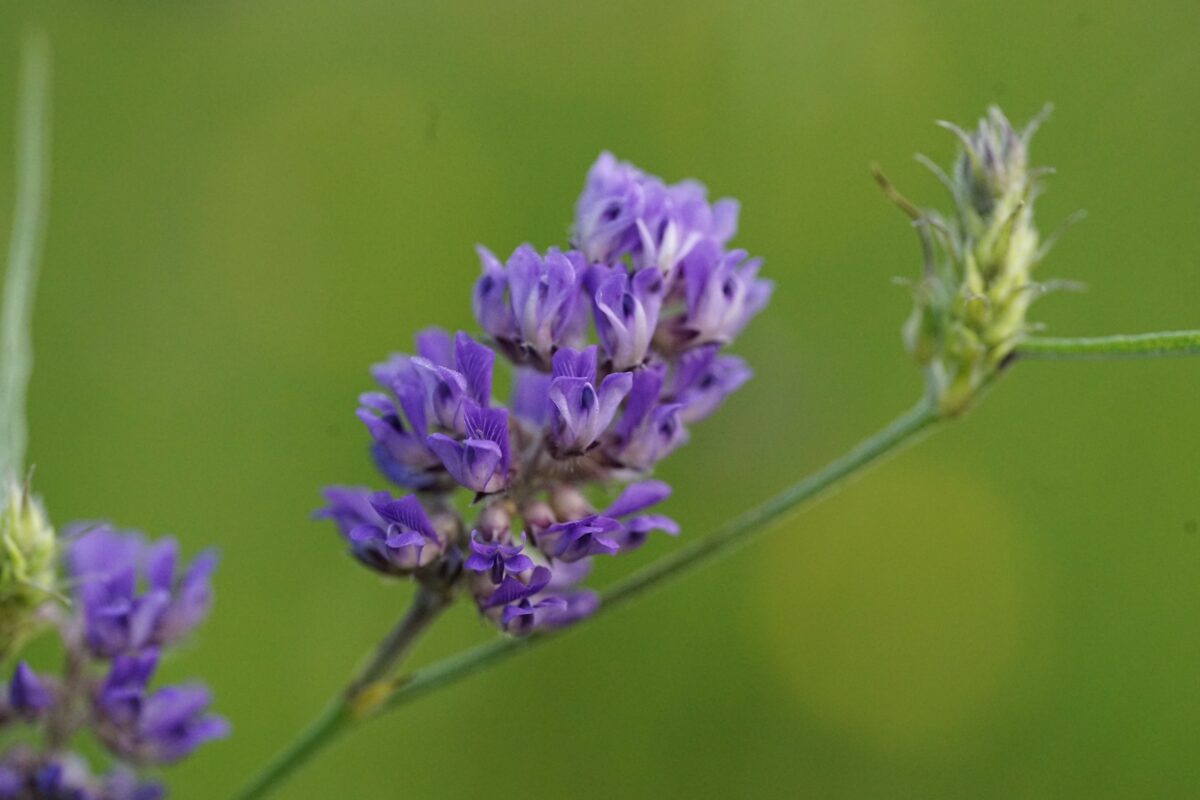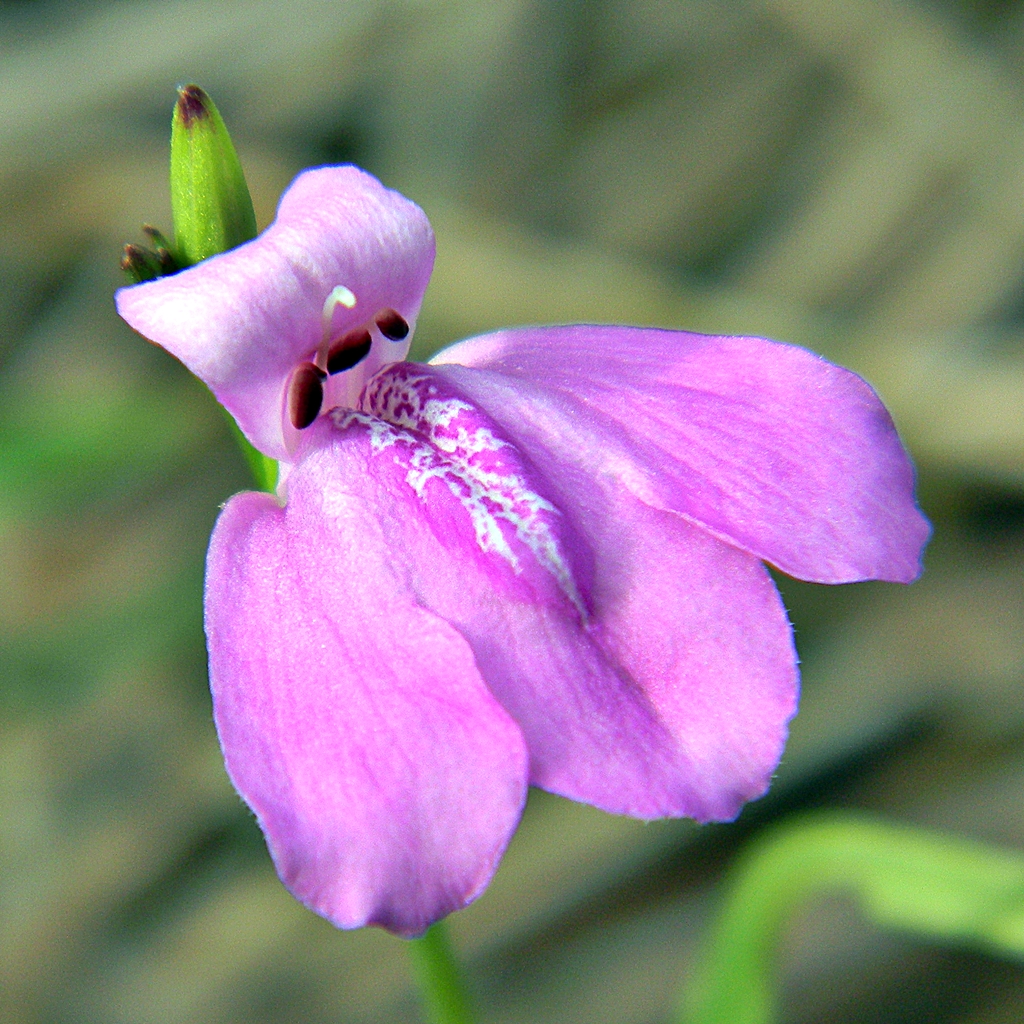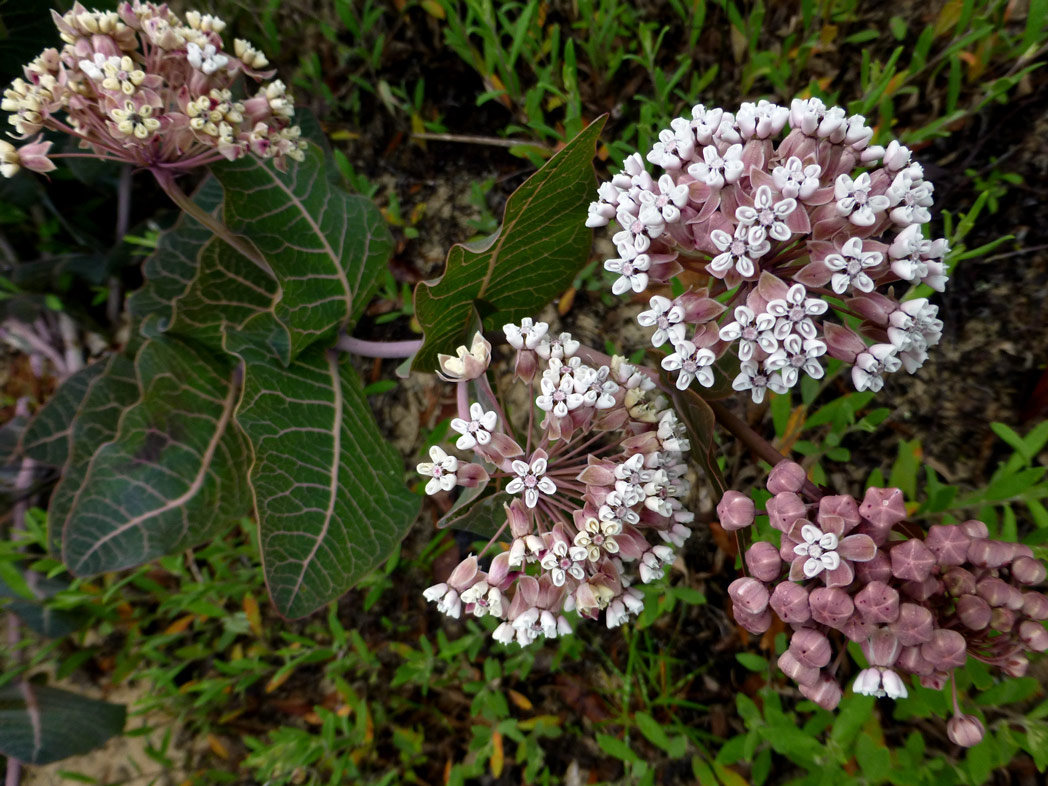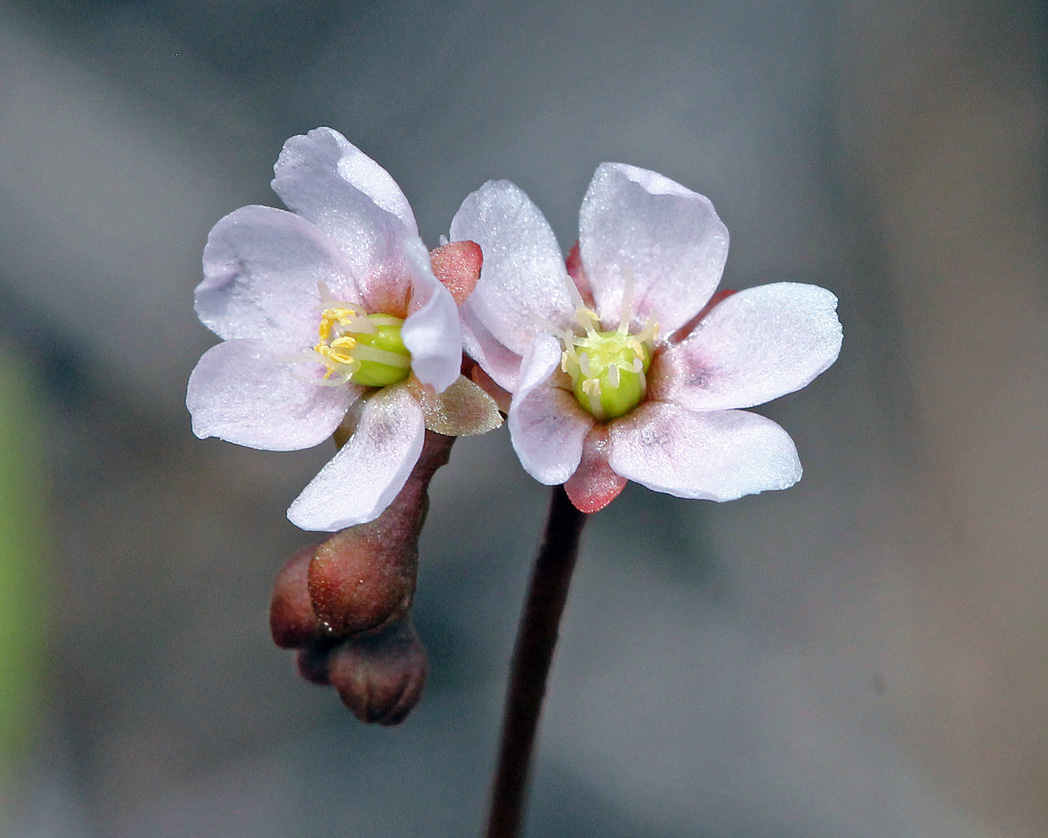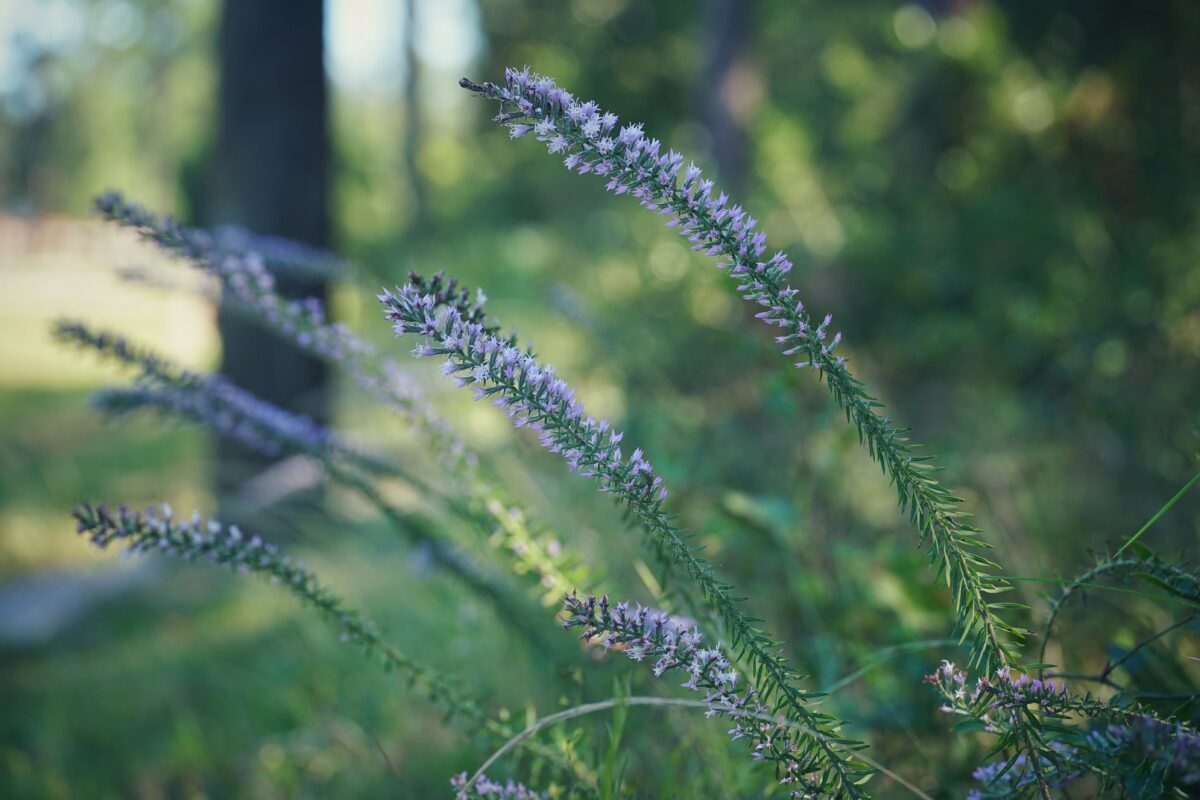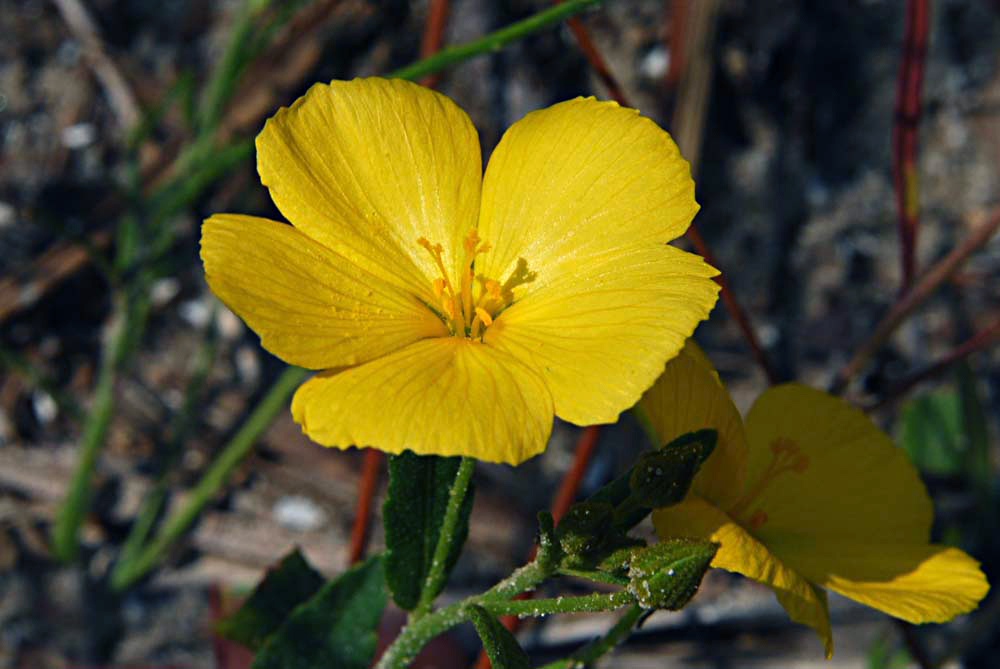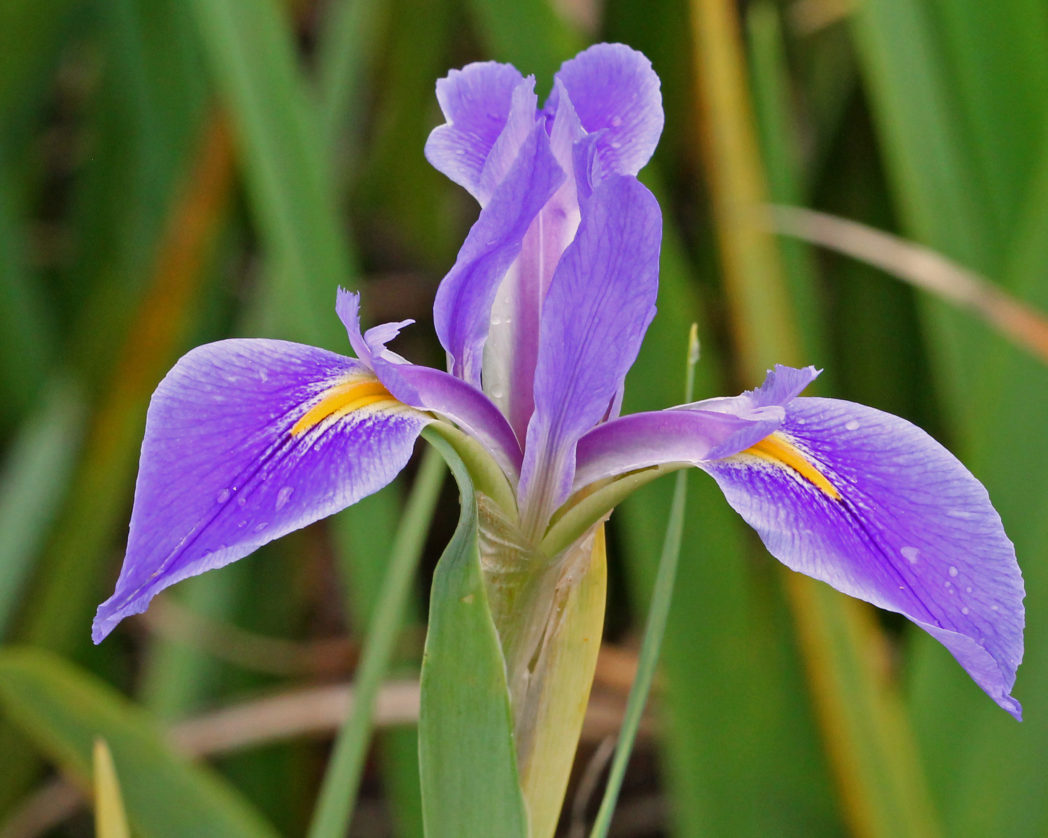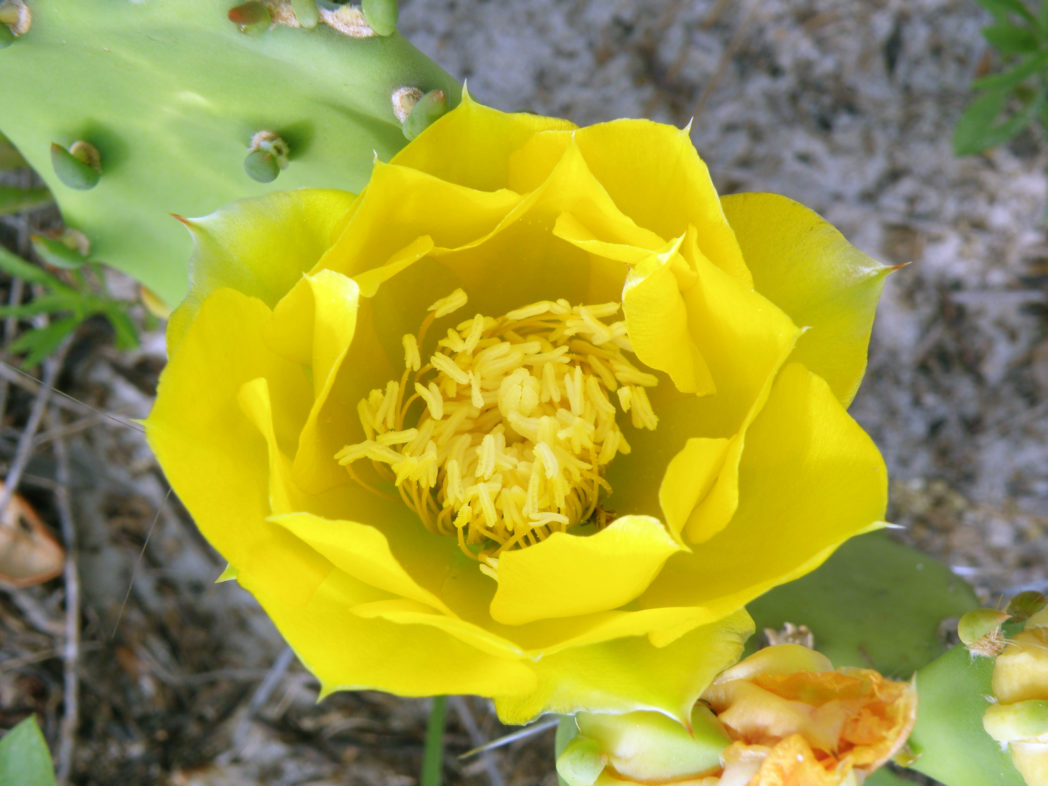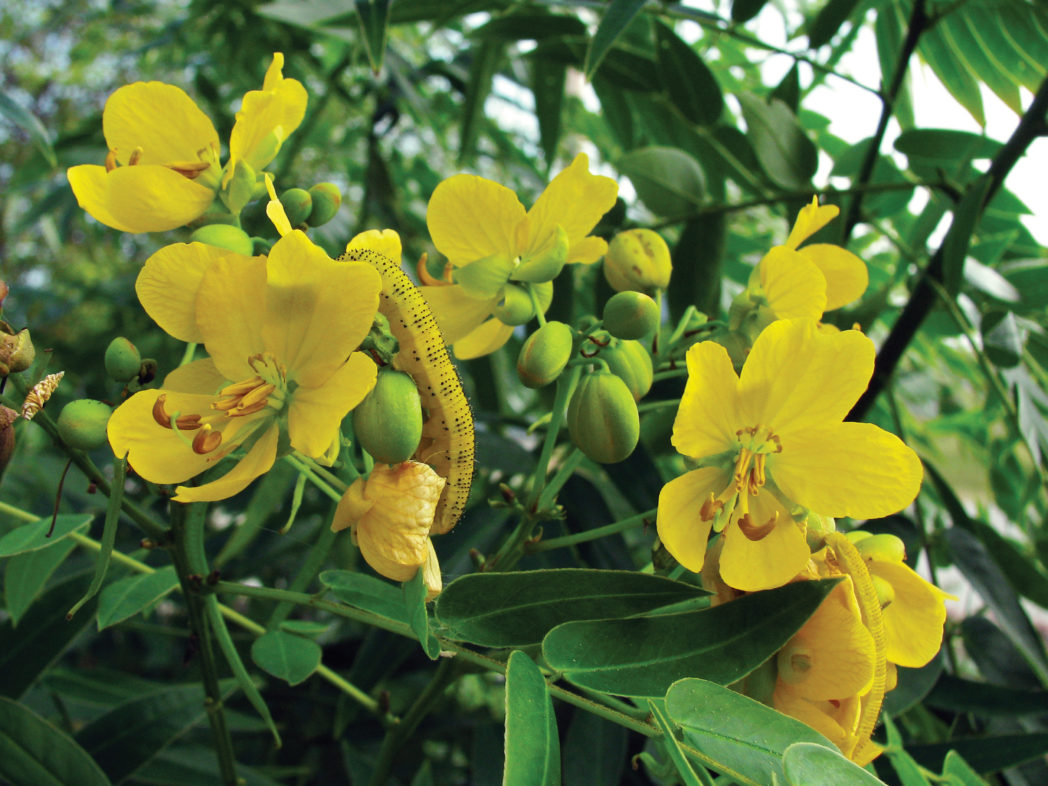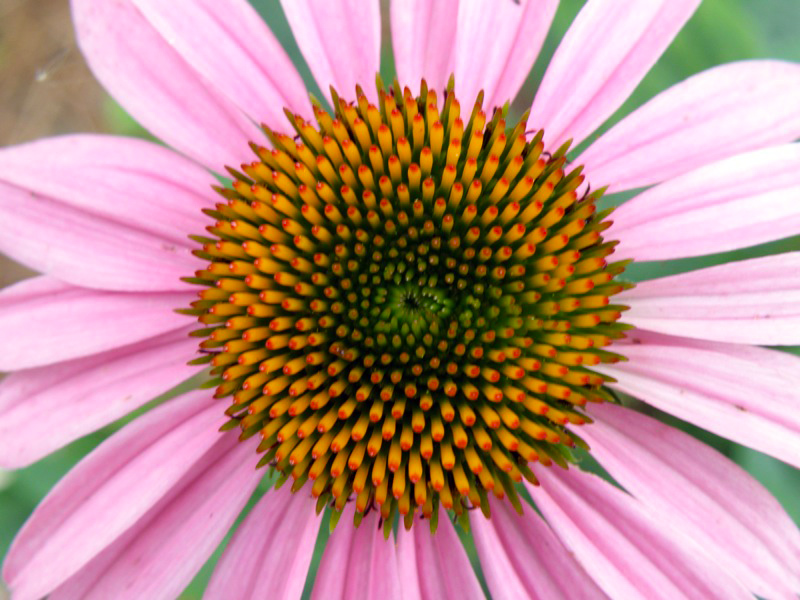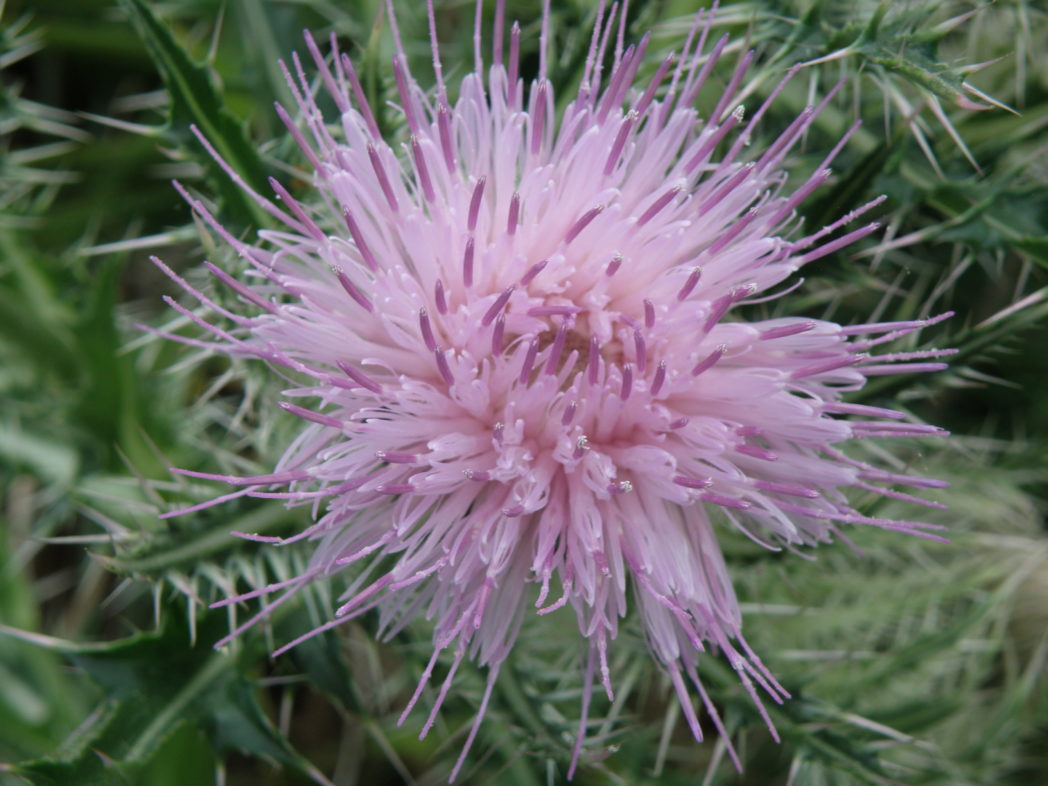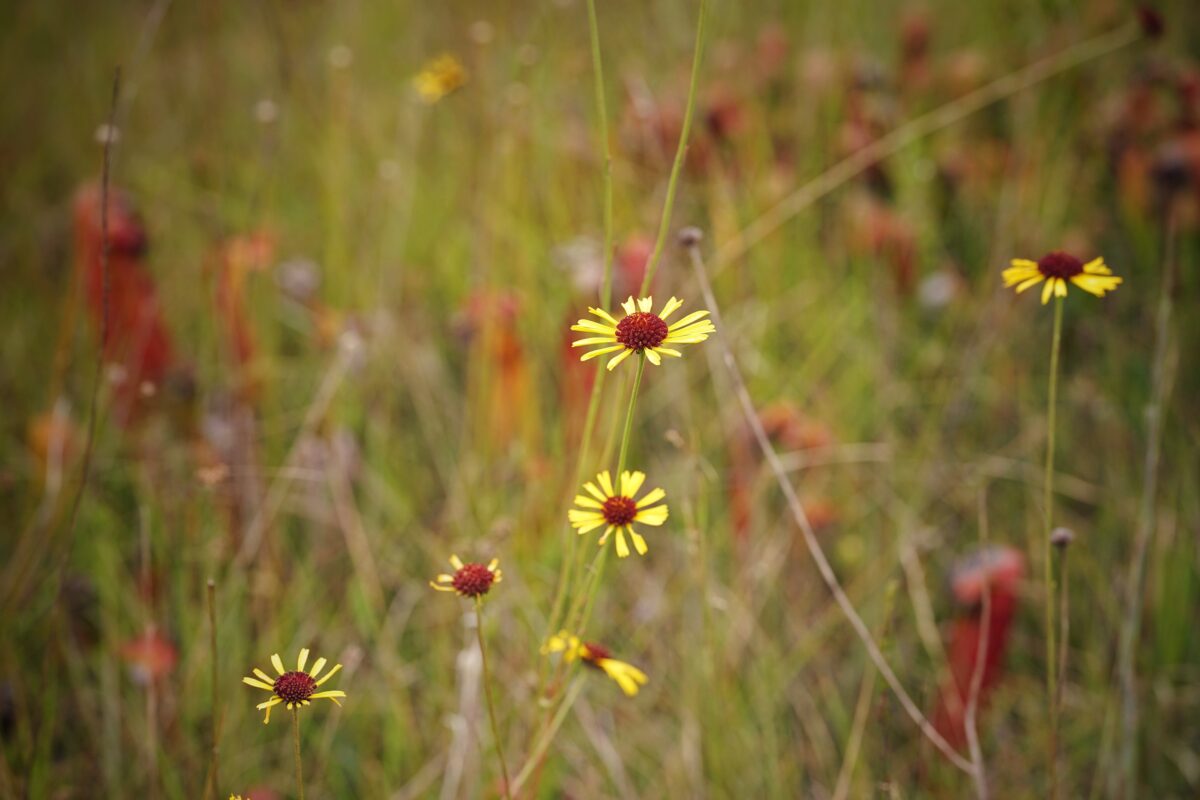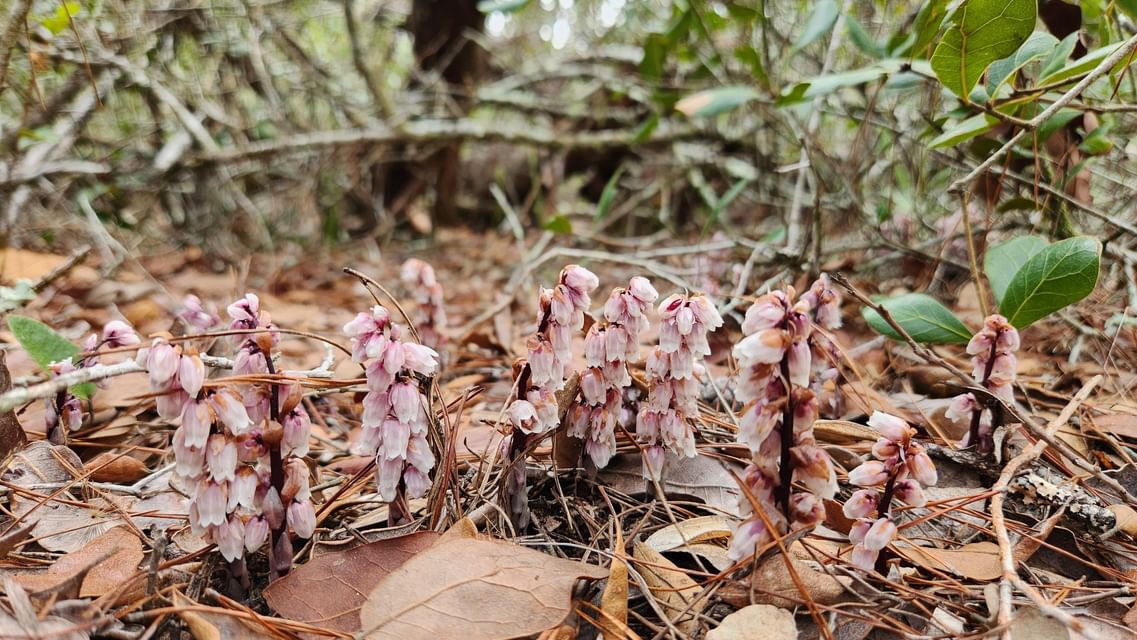Partridgeberry
Partridgeberry (Mitchella repens) is a dainty mat-forming vine with fuzzy white flowers that a variety of insects, especially bumble bees. Its fruits are enjoyed by birds, small mammals and humans!
Passionflower
Purple passionflower (Passiflora incarnata) has extraordinarily intricate purple-and-white-fringed flowers. The plant is the larval host plant of several butterflies including the Gulf fritillary and Zebra longwing.
Peelbark St. John’s wort
Also known as Sandweed, Peelbark St. John’s wort (Hypericum fasciculatum) is an evergreen shrub found in wet pinelands and savannas, and along the margins of swamps, freshwater marshes and ponds. It typically blooms spring through fall, but may bloom year-round. The flowers are attractive to polyester, yellow-face, large carpenter, bumble, leafcutter, resin and sweat bees. The plant provides food and cover for birds and other small wildlife.
Perennial saltmarsh aster
Perennial saltmarsh aster (Symphyotrichum tenuifolium) has been described online as a “weak straggly plant,” however, as one of the few and often the only large-flowered species present among the grasses and rushes of the salt marsh, it plays an important ecological role for native bees!
Pickerelweed
Pickerelweed (Pontederia cordata) typically blooms in spring through summer and occurs naturally in open, aquatic habitats such as pond, lake or river edges, marshes and swamps.
Pine-hyacinth
Pine-hyacinth (Clematis baldwinii) is an endemic wildflower that typically blooms spring through fall. Its flowers attract a variety of pollinators, its fruit provides food for many birds and small wildlife.
Pine-pink
Pine-pink (Bletia purpurea) is a state-threatened terrestrial orchid found in swamps, marshes, pinelands and pine rocklands in southern Florida. Its striking pink flowers bloom in winter, spring and early summer. Pine-pink flowers are a food-deceptive species. They do not contain nectar, but may attract bees and other insects with their conspicuous floral display. However, like many orchid species, Pine-pink is self-pollinating, and some of its flowers are cleistogamous, meaning the bud self-pollinates and never fully opens.
Pinebarren frostweed
Pinebarren frostweed (Crocanthemum corymbosum) has delicate lemon-yellow flowers that bloom spring through summer and attract a variety of pollinators. Blooms are many, but last only one day.
Pineland chaffhead
Pineland chaffhead (Carphephorus carnosus) typically blooms late summer through early fall and attracts butterflies, moths and other pollinators. It is endemic to only 13 Central and South Florida counties.
Pineland daisy
Pineland daisy (Chaptalia tomentosa) is an early-blooming aster found in wet flatwoods, bogs and freshwater marshes. It begins as nodding bud, and opens into a wheel of white ray florets.
Pineland heliotrope
Don’t forget Pineland heliotrope (Euploca polyphylla) if you’re looking for year-round blooms! This member of the forget-me-not family is a Florida endemic and is adaptable to a variety of conditions. Its small white or yellow flowers attract many pollinators.
Pineland leatherroot
Pineland leatherroot (Orbexilum virgatum) is an exceptionally rare and beautiful perennial wildflower that inhabits dry to moist areas of pine savannahs. Its bright purple flowers bloom from late spring into midsummer.
Pineland waterwillow
Pineland waterwillow (Justicia angusta) is an elegant wildflower found in lake and pond margins and wet pinelands, prairies and disturbed areas throughout much of Florida. It is near-endemic, occurring outside of Florida in only a few Georgia counties. The plant blooms spring through fall and attracts mostly bees. The genus name Justicia is an homage to Sir James Johnson, an 18th century Scottish horticulturalist. The species epithet angusta is from the Latin angustus, meaning “narrow,” and alludes to the plant’s narrow leaves.
Pinewoods milkweed
Pinewoods milkweed (Asclepias humistrata) blooms in spring and summer, attracting many pollinators including wasps and butterflies. It is a larval host for Monarch and Queen butterflies.
Pink sundew
Pink sundew (Drosera capillaris) is an insectivorous wildflower that grows in abundance in wet pinelands, savannas and bogs, where it can form a glistening red carpet.
Pinkscale gayfeather
In fall, Florida’s natural areas and roadsides light up with flares of bright purple from our 17 native Liatris species. Among them, Pinkscale gayfeather (also called Elegant blazing star) is one of the most beautiful and unique. Butterflies and bees are attracted in abundance to its flowers and feed on the nectar they provide.
Pitted stripeseed
Pitted stripeseed (Piriqueta cistoides) is a cheerful perennial wildflower that emerges in early spring and typically blooms in late summer. It attracts small bees and butterflies.
Prairie iris
Prairie iris (Iris savannarum) is an emergent aquatic with showy flowers that bloom in spring. It has one of America’s largest native iris flowers.
Pricklypear cactus
Pricklypear cactus (Opuntia mesacantha) flowers in late spring, attracting a wide range of pollinators, especially native bees. The fleshy fruits and seeds are eaten by birds, small mammals and gopher tortoises.
Privet senna
Privet senna (Senna ligustrina) flowers are mainly bee-pollinated, but the plant is a larval host for the Cloudless sulphur and Sleepy orange butterflies.
Purple coneflower
Purple coneflower (Echinacea purpurea) has striking blooms that attract a variety of butterflies, bees and even hummingbirds. Its seeds are eaten by birds and other wildlife.
Purple thistle
Purple thistle (Cirsium horridulum) is a larval host for the Little metalmark and Painted lady butterflies. The seeds are an important food source for seed-eating birds.
Purpledisk honeycombhead
State-endangered Purpledisk honeycombhead occurs in wet pine flatwoods, savannas, bogs and wet ditches and is pollinated by a variety of insects including bumblebees and butterflies. Its known populations are threatened due to habitat loss and fire suppression.
Pygmy pipes
Winter brings interesting blooms to North Central Florida’s hardwood hammocks, including the cryptic Pygmy pipes (Monotropsis reynoldsiae). With only around 10 populations currently known, this narrow range endemic species is listed as state-endangered.

